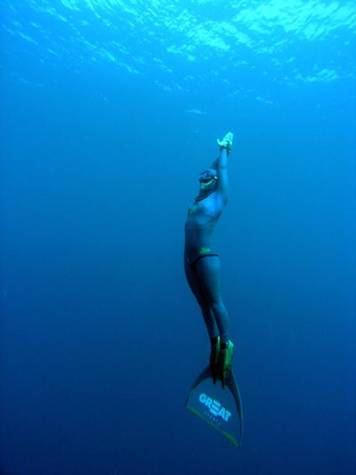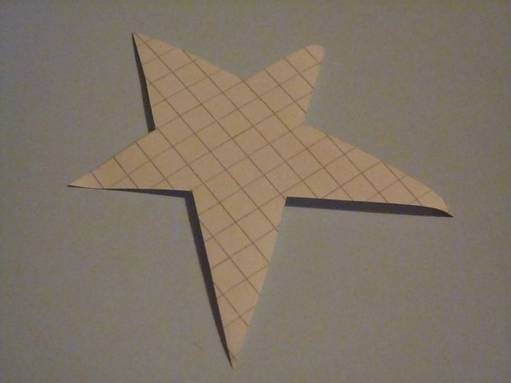
Salty Sam’s Fun Blog for Children
Number 265
Freediving
Hello Everyone

My lighthouse has has a real battering in the high winds this winter. We have had lots of rain here too in Rocky Bay, like everywhere else in the country. The sea has been rough and there have not been too many opportunities to walk on the beach.
But we have blossom and daffodils out now and spring is on its way.
Sandy Cove is the tourist beach next to Rocky Bay. Many holidaymakers go there to swim and sunbathe in the warm summer weather and if they have forgotten their beach ball, bucket and spade or snorkel, there are shops along the promenade where all these colourful things can be bought.
You may have used a snorkel yourself. You have to be brave to use it because sometimes it takes a lot of courage to put your face underwater.
Maybe in swimming lessons you are sometimes encouraged to dive under the water – with no breathing apparatus.
This is called freediving.
People have been freediving for as long as they have been swimming.
When you are in the water for a long time, your fingers and the soles of your feet start to ‘prune’. This is nothing to worry about. lt is just the adaption of the human body to water. The skin changes its texture to create grip for your hands and feet. lt is the same principle as the tread on a tyre. We can’t live in water all the time, but we can spend a certain amount of time in it.
ln ancient times, if people wanted to dive under water they had to do it without any sort of equipment to help them breathe. They might have used a long, hollow reed they had picked from the side of the river and held it in their mouths to breathe through, but they could not use it very deep down.
People would have wanted to dive down under water to gather food and maybe also pearls, coral and sponges too. When ships sank they might have tried to salvage valuables lost with the wreck.
Pearls and coral could be used to make jewellery, and sponges were used for washing as far back as Ancient Greece and Rome. The Japanese and people living in the lndian Ocean and Pacific Oceans have a long tradition of diving for pearls over hundreds of years. Women are especially good at pearl diving.
Roman soldiers would dive underwater to attack barricades at the entrance to ports or retrieve items from sunken warships.
These ancient divers would take a heavy stone with them to help them sink to the sea bed and keep them there for up to five minutes at a time – once they had gradually developed their lungs for such a task.
Many people also dived for spear fishing. They could easily use sharpened sticks as spears.
Nowadays, people dive to take underwater photographs or film of marine life.
Modern freedivers often wear enormous flippers to help proper them along underwater.
You can see creatures that are very strange to our eyes when you are deep down in the sea. They are very different from land creatures because they have adapted to living in water, not air.
Freediving is now considered to be a kind of sport, even a competitive sport – but it can be very dangerous because if divers go down too deep or stay underwater for too long, they can black out and drown.
There are other sports that people do underwater.
There is aquathlon which is underwater wrestling and synchronized swimming which is formation acrobatics. Both require strength and stamina and an ability to stay under water for long periods of time.
People also play rugby, football and hockey underwater too!
lf you learn to dive in your swimming lessons, it might be a useful skill to learn, but you must remember never to dive head first into strange water because you could hit your head on something that you cannot see under the surface of the water and injure yourself.
Bye bye everyone – don’t forget to subscribe to my blog!
lf you like my blog, please support it by telling all your friends and followers about it.
Thank you!
And see you again next Fun Friday!
Love and kisses
Salty Sam

www.christina-sinclair.com


Bill and Bob’s Joke of the Week![]()
![]()
Bill: What do you say to a blue whale?
Bob: l don’t know. What do you say to a blue whale?
Bill: “Hello! Cheer up!”

Salty Sam © Christina Sinclair 2015
Unauthorized use and/or duplication of material from this blog without express and written permission from this blog’s author and owner is strictly prohibited.
Links may be used to www.christina-sinclair.com

Picture Gallery
 Freediving
Freediving

 Pearl diving in Japan
Pearl diving in Japan
 Sea sponge
Sea sponge
Collecting them nowadays is not encouraged


 THE SALTY SAM NEWS DESK
THE SALTY SAM NEWS DESK

This week Auntie Alice was working on her garden pond.
She has a very large garden and there is always something that needs attention – consequently her pond has been a bit neglected of late.
She decided to put some more colourful plants around the edge of it this year and was planning which plants she would like to use.
She decided that some irises would look nice. These are the type of iris that like living at the edge of a pond, and there are many different colours to choose from.
The pond does not have steep edges and this is useful if a squirrel or hedgehog were to fall into the water. Hopefully they can swim to the edge and crawl out again – there is plenty to grab hold of.
In order to keep a pond clear, you need three types of plants. They are called marginals (these live at the edge of the water), oxygenators which should grow to cover about half of the bottom of the pond and also something to help shade the water. You need about half the surface of the pond covered by leaves and water lilies do this well and with this good balance of plants, you should have clear water and a pond well-able to support wildlife.
Water lilies can be planted in plastic baskets designed especially for them or you can wrap their roots up in some hessian along with a handful of soil and a few stones to weight the bag down. Just throw them into the pond at a depth where the leaves will float on the surface of the water and they will get on with the job of establishing themselves.

If a pond attracts frogs, you should count yourself very lucky, as they will eat slugs and snails and other things that eat your plants.
If you see a jelly-like substance in the pond with dark spots in it, don’t touch it because these are baby frogs or toads.
If you ever pull weed out of the water, always leave it to dry out on the side before you put it on the compost heap. There will be all manner of slow moving creatures in it that will need a chance to crawl back into the pond.
But please remember that although ponds are fascinating to older children, they can be really dangerous for tiny children. You can still have a pond if you put a stable grill across the top of the water to stop children and animals falling in. This grill will also help to stop herons and other animals taking any goldfish you might have.
Watching fish is very restful and relaxing. It is a good way to calm down after a stressful day.


*********************
*********************


Quick Quiz
All of these things can hold water. Can you fill in the missing letters to work out what they are?
- W _ t _ r b _ t _
- K _ t _ l _
- H _ r _ e t _ o _ g _
- S _ n _
- B _ c _ e _
- B _ t _
- S _ u _ e _ a _




lt’s the Weekend!

HOW TO MAKE A STARFlSH FAMlLY
This starfish family is easy to make.
Draw a star shape onto some squared paper.
The mother starfish is 7cm tall and 6cm wide.
The other two starfish are slightly bigger and smaller than this.
You will need two pieces of felt for each starfish. Make your paper patterns and fold them in half lengthways to make sure they are symmetrical before you cut out your felt pieces.

Or print out a star shape to use.

Embroider the faces on before you sew around the edges and stuff lightly just before you seal them up with the last run of stitching.
CAVE BAG STARFISH HOME (KNIT TWO)
Using 4mm knitting needles and brown dk yarn cast on 33 stitches
Knit 2 rows
Sl1 (k1, p1) repeat the last 2 stitches to the end of the row
Repeat the last row 79 times (80 rows of moss stitch)
Knit 2 rows
Cast off
TO MAKE UP
Sew the sides of the bag together
Embroider some seaweed into the sides using lazy daisy stitch and green dk yarn
Crochet 100 chains into a length of brown yarn
Thread the cord into the top of the bag
Tie the ends of the cord together and thread the ends into the cord to neaten


Please note that the material on this blog is for personal use and for use in classrooms only.
It is a copyright infringement and, therefore, illegal under international law to sell items made with these patterns.
Use of the toys and projects is at your own risk.
©Christina Sinclair Designs 2015


Quick Quiz Answers
- Water butt
- Kettle
- Horse trough
- Sink
- Bucket
- Bath
- Saucepan

A horse trough for horses to drink from
There used to be lots of them positioned at the side of the street
when people used horses as the main form of transport

For an Embroidery Stitches Chart
Check out Blog Post 3

